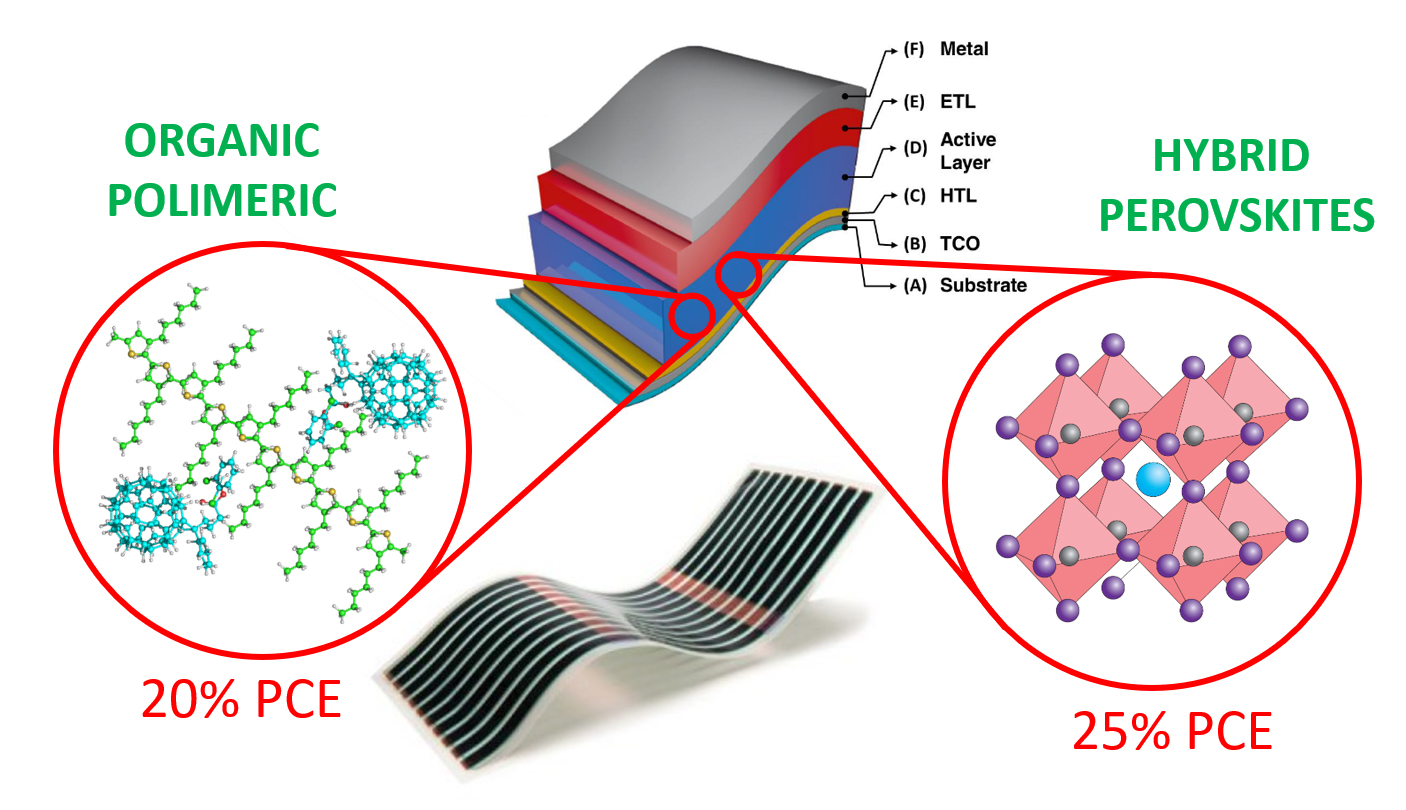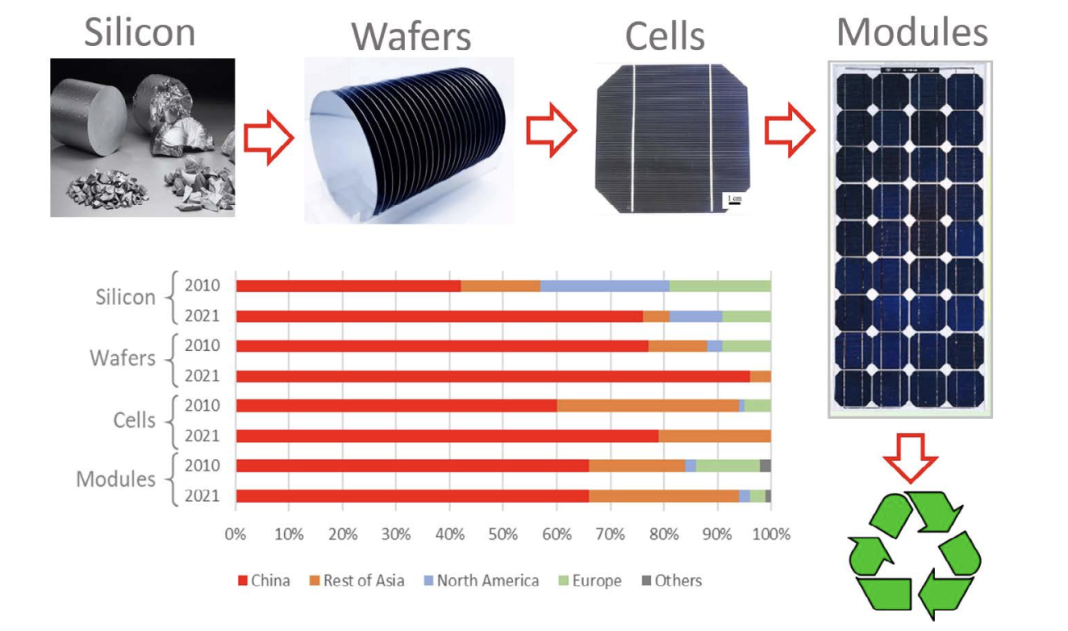Antonio Urbina, from the Department of Sciences and Institute for Advanced Materials and Mathematics (INAMAT2), Universidad Pública de Navarra (UPNA), based at Pamplona in Spain, investigates whether Europe can recover its capacity for photovoltaic manufacturing
The energy transition is contributing worldwide to reducing greenhouse gas emissions, the leading cause of climate change. This has been achieved, despite a continually increasing energy demand in all economic sectors, by an impressive growth of installed renewable capacity, the rapid electrification of some sectors (home heating, transport) and more efficient energy use.
Europe’s photovoltaic manufacturing capacity
Within renewable energy technologies, solar photovoltaic (PV) has shown the most considerable increment in the past two years. By the end of 2023, the total installed PV power capacity globally is more than 1.5 TW, and it is expected to reach 8 TW by 2050. (1) The rate of growth has been impressive, with a Compound Annual Growth Rate (CAGR) of cumulative PV installations of about 26% between the years 2013 and 2023, achieving an annual installation of 400 GW in 2023, when manufacturers from Asia accounted for 94% of total PV module production. China holds the lead with a share of about 86% (and a share in installed capacity of 43%), while Europe installs 20% but only produces 2% (down from its maximum of more than 40% achieved in 2008 and now lost). (2)
The European Union has committed to a massive deployment of renewable energy, such as that proposed by the REPowerEU Plan, that will reduce 4.9 Gigatonnes of carbon dioxide (Gt CO2) emissions by 2050, which represents 21% of the total mitigation potential of the emissions in the energy sector. (3) If the PV installations in Europe continue at the impressive rate of 20% of the world’s annual installed capacity in the coming years and the production share of PV modules in Europe is not significantly increased, most of these future installations will depend on imports. This emphasises the European external dependency on energy production, in this case for a renewable source, with the Sun as the ultimate source, but with a value chain that depends mainly on Asian manufacturers (Figure 1).

A plethora of emerging PV technologies
Within all available PV technologies, crystalline silicon (now mainly monocrystalline, with poly-crystalline being rapidly phased out) dominates the market with more than 97%. Despite this dominance, the technological variations are immense: thin film (CdTe and CIGS) and III-V tandems for space applications account for the remaining 3% of the market, and a plethora of emerging technologies are very promising, with organic and hybrid technologies being thoroughly investigated and producing prototype modules which could reach the market very soon (4) (Figure 2).
Crystalline silicon is a mature technology that has achieved a power conversion efficiency of 26.8% (5), still far from the single-junction Shockley- Queisser limit of 33.7% for a single- junction cell. Although this increment will come with an increasing and expensive technological effort, at the commercial module level, this efficiency translates to 22.7% (passivated emitter rear contact, PERC, the most widely installed c-Si module).
Within the emerging technologies, hybrid perovskite solar cells, with PCE of 25.1%, have evolved rapidly from the initial methyl-ammonium lead iodide perovskite to quaternary compounds and very advanced electron and hole transporting layers (6). Similarly, organic solar cells, based on bulk heterojunctions (BHJ) of acceptor and donor materials, starting from modest PCEs with the benchmark poly-3-hexyl- thiophene and fullerene derivative BHJs have achieved an impressive PCE of 20%, with a donor polymer showing nanofibril ordered structures and a thiophene-terminated non-fullerene acceptor. (7)
Both emerging technologies have yet to reach the market, but they could be massively produced with low environmental impacts and with roll-to-roll printing-compatible techniques. Many scientific advances and technological developments have been achieved in European R&D institutions, and there is now an excellent opportunity to exploit these advancements and build new industrial manufacturing capacity on European soil.
The challenge of tackling PV module waste
Another challenge is looming on the horizon concerning photovoltaic technologies: the deployment of PV modules started in the late 1980s, and many modules are now reaching their end-of-life and being replaced by a new generation, thus generating a cumulative PV module waste, which is expected to reach 78 million tonnes by the end of 2050. (8)
The recycling methods for crystalline silicon technologies still use mechanical and chemical processes that must be more efficient with regard to materials recovery, especially silicon or silver, with much research and development being committed to improving PV recycling technologies. (9)
This is a challenge and an opportunity for the European industry: some pilot plants for massive c-Si module recycling are already functional, and other technologies will require different approaches (thin film or, furthermore, emerging technologies that are still to be deployed) (10), thus opening a complex roadmap for the future of massive photovoltaic capacity deployment, use, and end-of-life.
References
- IRENA (2019) “Global energy transformation: A roadmap to 2050” (2019 edition), International Renewable Energy Agency. https://www.irena.org/Publications/2019/Apr/Global-energy-transformation-A-roadmap-to-2050-2019Edition
- International Energy Agency Report IEA-PVPS-T1: “Snapshot of Global PV Markets” (2023), ISBN: 978-3-907281-43-7. https://iea-pvps.org/wp-content/uploads/2023/04/IEA_PVPS_Snapshot_2023.pdf
- REPowerEU Plan, European Commission (2022), available in: https://commission.europa.eu/strategy-and-policy/priorities-2019-2024/european-green-deal/repowereu-affordable-secure-and-sustainable-energy-europe_en
- A. Urbina, “Sustainability of photovoltaic technologies in future net-zero emissions scenarios”, Progress in Photovoltaics: Research and Applications, 31, 1255-1269 (2023). https://doi.org/10.1002/pip.3642
- H. Lin, M. Yang, X. Ru, et al. Silicon heterojunction solar cells with up to 26.81% efficiency achieved by electrically optimized nanocrystalline-silicon hole contact layers. Nature Energy 8, 789–799 (2023). https://doi.org/10.1038/s41560-023-01255-2
- S. M. Park, M. Wei, J. Xu, et al. “Engineering ligand reactivity enables high-temperature operation of stable perovskite solar cells”. Science 381, 209-215 (2023). https://www.science.org/doi/10.1126/science.adi4107
- C. Chen , L. Wang, W. Xia, et al. “Molecular interaction induced dual fibrils towards organic solar cells with certified efficiency over 20%”. Nature Communications 15, 6865 (2024). https://doi.org/10.1038/s41467-024-51359-w
- S. Weckend, A. Wade, G. Heath, “End-of-life management: Solar Photovoltaic Panels”, IRENA in collaboration with IEA-PVPS Task 12, (2016). ISBN: 978-92-95111-99-8. https://www.irena.org/publications/2016/Jun/End-of-life-management-Solar-Photovoltaic-Panels
- K. Komoto and J. S. Lee, International Energy Agency Report IEA-PVPS T12-10 “End-of-Life Management of Photovoltaic Panels: Trends in PV Module Recycling Technologies” (2018), ISBN 978-3-906042-61-9. https://iea-pvps.org/key-topics/end-of-life-management-of-photovoltaic-panels-trends-in-pv-module-recycling-technologies-by-task-12/
- G. A. Heath et al. “Research and development priorities for silicon photovoltaic module recycling to support a circular economy”, Nature Energy, 5, 502-510 (2020). https://doi.org/10.1038/s41560-020-0645-2

This work is licensed under Creative Commons Attribution-NonCommercial-NoDerivatives 4.0 International.


